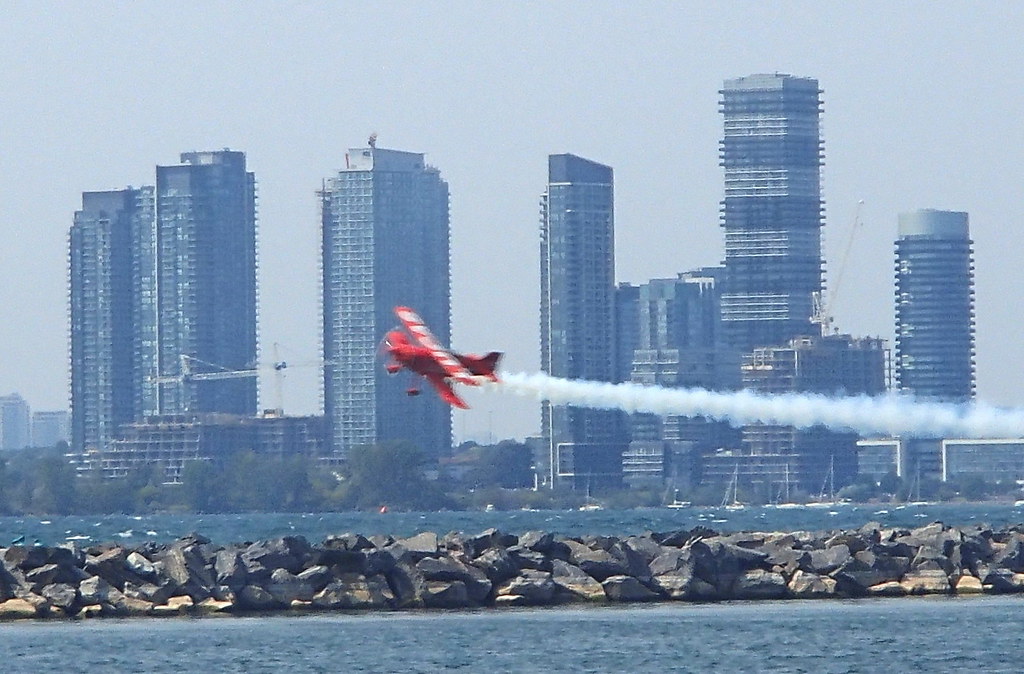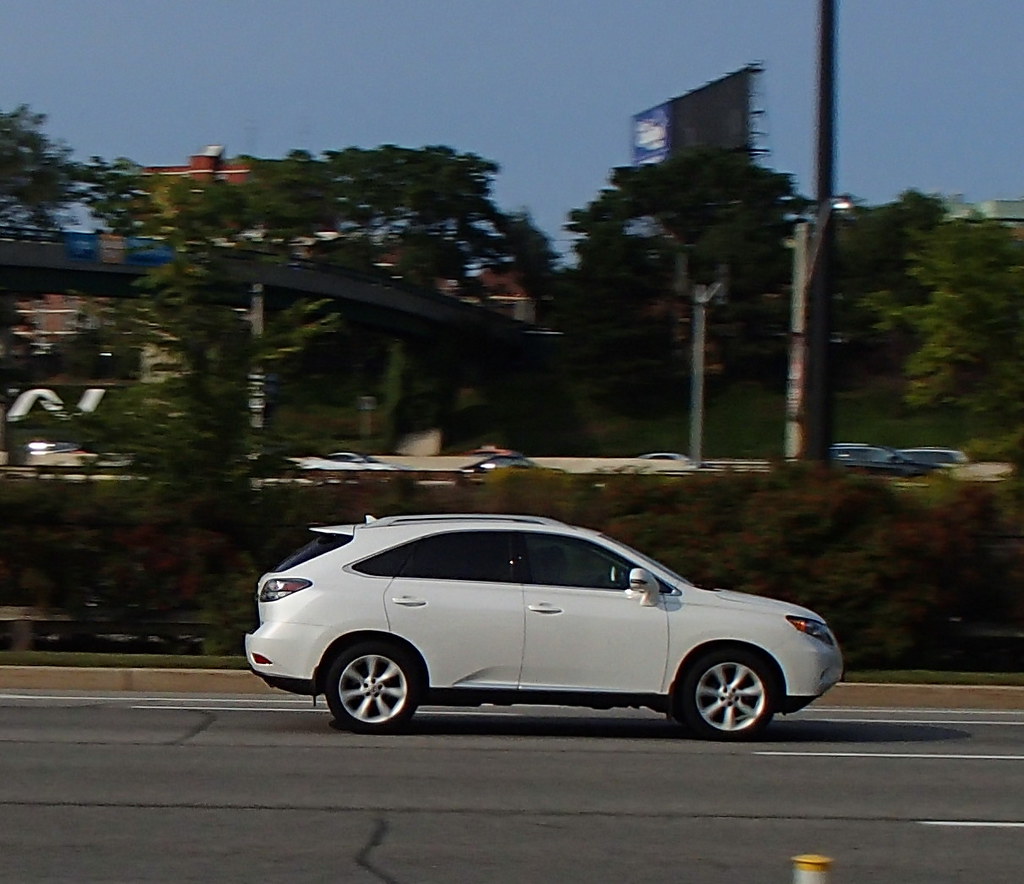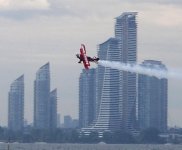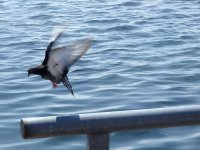The Toronto air show taking place at the waterfront on the Labor Day weekend had some dramatic weather on Sunday, with rain, stormy clouds and light, and the planes kept flying right through it all. I forgot to bring the compact waterproof point-and-shoot (this maybe belongs in the what have you forgotten thread)... and probably missed out on some great pix. The forecast the next day was for rain again, so hoping for a repeat of the drama, I went again, with camera this time, but only got hazy skies. There was a bright red stunt pilot flying very low so took a few anyway.
The ISO was kept low for better quality and with the slower shutter speed at 1/160 sec, it seemed that the camera's image stabilization would keep the plane sharp while panning on it, following the plane while it flew past. But the plane blurred even though the panning was smooth, while the background buildings remained sharp. Every shot had this, so my guess is the image stabilization was working on the background buildings and not the plane. The remedy might be to disable image stabilization and increase ISO for a higher shutter speed, at least to 1/500 or 1/1000.

More blur is visible in a blown-up portion... the background buildings are sharp. Image stabilization must have been working to keep the buildings sharp rather than the smaller plane, even though the camera was being panned to follow the plane's movements.

At this time of year, migrating vees of geese can make for some great photos (still haven't managed to catch this in a camera even though several times it looked great from a canoe)... so... note to self, when those honking sounds are approaching, have the camera ready with disabled image stabilization and increased ISO for higher shutter speed.
The ISO was kept low for better quality and with the slower shutter speed at 1/160 sec, it seemed that the camera's image stabilization would keep the plane sharp while panning on it, following the plane while it flew past. But the plane blurred even though the panning was smooth, while the background buildings remained sharp. Every shot had this, so my guess is the image stabilization was working on the background buildings and not the plane. The remedy might be to disable image stabilization and increase ISO for a higher shutter speed, at least to 1/500 or 1/1000.

More blur is visible in a blown-up portion... the background buildings are sharp. Image stabilization must have been working to keep the buildings sharp rather than the smaller plane, even though the camera was being panned to follow the plane's movements.

At this time of year, migrating vees of geese can make for some great photos (still haven't managed to catch this in a camera even though several times it looked great from a canoe)... so... note to self, when those honking sounds are approaching, have the camera ready with disabled image stabilization and increased ISO for higher shutter speed.




